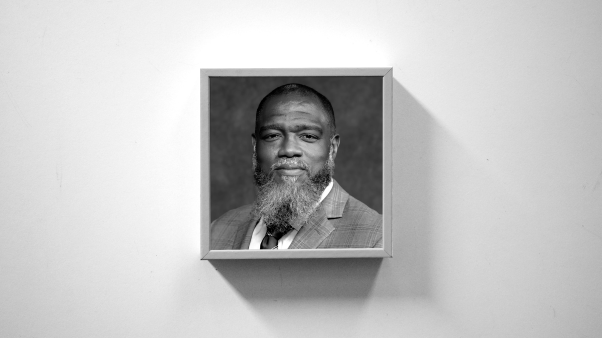In sophisticated circles the feeling is gaining ground that our technological advances are outstripping the changes in the genetic structure of the race so drastically that steps must be taken rather quickly to correct the imbalance. Some are frankly asserting that there must be a radical application of genetic engineering if man is to change rapidly enough to control his world.
Experimental genetics has now clasped hands with biochemistry, and a movement is emerging for a rapid and planned modification of man. This must, it is alleged, move far more swiftly than is possible through the usual combination or “mix” of gene frequencies, even as this might be accelerated by selective eugenics.
For some years now there has been experimentation in the control of gene-selection by chemical means and modification of somatic cells by genetic surgery. Part of today’s scientific endeavor in eugenics is the outgrowth of this type of experimentation. At the present time, however, the idea is gaining ground that the more general experimentation with modification of somatic cells is too tedious a process. The emphasis is shifting to modification of the basic reproductive cell, the fertilized ovum, which would of course affect the programming of the entire resulting organism.
This mood has given rise to a movement that would extend to animal experimentation the process of asexual reproduction that is common among plants, by which colonies of plant-organisms are produced through the dispersal of cuttings from a single ancestral source. This technique has been applied with success to lower animal forms, such as fruit flies, salamanders, and frogs. It consists basically in the transplantation of a nucleus from a somatic cell of an adult organism into the nucleus of an unfertilized ovum. It is supposed that the major part of the DNA of a cell is borne by the nucleus, since the renucleated ovum develops into a new specimen that is essentially an identical twin (a generation later, of course) to the donor animal.
As yet this technique, called cloning, has not been applied to higher mammals. Those who ought to know, however, tell us that the technical difficulties involved in cloning higher animals, and even humans, will shortly be overcome. Little by little, the problems are being solved in smaller mammals, such as mice. The best estimate is that within five or six years clonal reproduction of human beings will be possible. And it goes without saying that when such an achievement becomes possible, scientists will do it. After all, the essentials for such an operation are only a willing prospective mother, a medical biologist, a gynecologist, and a bit of donor tissue. The process may well be undertaken on a small scale at first, but success will generate pressures in favor of more widespread practice.
The cloning of a human being will probably involve a more complicated type of nuclear transplantation than has been required in the asexual reproduction of salamanders or frogs. Instead of the replacing of the nucleus of an unfertilized egg with a cell-nucleus of a donor, there will need to be a “surgical” removal of the nucleus of a fertilized ovum, and a replacement or renucleation of it with a cell-nucleus from an adult donor.
From experimentation with lower forms of animal life, it is assumed that the human being produced by clonal reproduction will be of the same sex as the nuclear donor. It will likewise bear the same genetic code, and thus be essentially an identical twin to the donor. Theoretically, it will then be possible to produce, by means of nuclear transplantation, a clone or colony of individuals bearing an identical developmental “fix” and having the same physical and mental characteristics.
Clonal reproduction of human beings is said to offer a number of advantages. First, it would allegedly permit the elimination of the major sources of genetic weakness and abnormality. This, it is said, cannot be achieved through such forms of genetic engineering as the surgical modification of general (i.e., non-reproductive) somatic cells.
Again, it is held that individuals produced by clonal reproduction would, by possessing an identical genotype, bear the same pattern of excellences, given the proper choice of ovum-source and nuclear donor. There would be, it is assumed, a basic mental and emotional affinity that would make it easy for the members of a human clone to perform together in specialized forms of scientific endeavor, especially those requiring working at close quarters for long periods.
Clonal brothers or sisters would be able to accept tissue or organ transplants from each other without danger of tissue rejection. It has been suggested that the existence of colonies of identical “twins” would provide valuable control groups for new and potentially beneficial medical experiments.
If this reproductive technique becomes widely accepted and practiced, there will be strong pressures in favor of “banks” of nuclear tissue or cultures of tissues, taken from “superior” donors, for use now or in future generations. Thus genetic copies of persons long dead would be produced. One cannot foresee the full potential consequences of genetic engineering when applied to the transformation of basic reproductional material.
This past term, the writer was enrolled in a course in medical ethics in Harvard Medical School. There deep concern was expressed at a number of points regarding the possibility of human cloning and other forms of parahuman reproduction. Among them were the following:
Until more precise methods are developed for monitoring embryonic development during the gestation period, there exists the possibility that the resultant creature might be a monster. What then, especially if it were a truly human one? The peril would not be averted completely in extra-uterine (laboratory) gestation.
Medical men are far from certain of the utility of the supposed psychological sameness of possible clonal brothers or clonal sisters. They are inclined to view with seriousness the statements of Paul Ramsey in Fabricated Man that producing carbon copies of a single individual through programmed reproduction would serve only to magnify adjustive problems. After all, identical twins do not necessarily find that having the same genotype aids them in establishing personal identity. One can only try to imagine how profound would be the quest for individuality in case of each of, say, a dozen or more persons who in some ways were in maximum sympathy with each other.
Again, there is concern for the extent to which parahuman reproductive techniques might be carried forward, especially by a scientific world that has not always been guided by ethical considerations. This lack seems to have been expressed in both the choice and the extent of its projects. What, for example, would prevent the mixing of human reproductive material with the nuclear or ovular donations from sub-human forms? This would quite probably multiply the possibilities of genetic mishaps. Paul Ramsey has a penetrating critical estimate of the problems involved here (Fabricated Man, p. 81 f.), especially as these relate to the uniqueness of man.
There is concern within the medical world over the degree to which the servants of pure science are capable of making the kind of judgments that ought to underlie a sound public policy. It seems clear now that the obstacles to human asexual reproduction are purely technical. And since it seems clear that the do-able soon becomes the done, tomorrow’s public policy may well be determined, not by what is either right or wise, but by what is possible.
The evangelical shares all these anxieties and adds a few of his own. He would not—or at least should not—oppose genetic engineering solely because it is new and untried. But he will raise substantive questions, among them that of the degree to which nature is contravened in the case of clonal reproduction. He will, first of all, question the humanistic and positivistic tone of many who discuss the matter, and the quality of their conclusions. He will feel that something the Creator surrounded with a “holy mystery” is on the verge of being made wholly clinical and largely impersonal.
He may question the wisdom of a technique in which the natural means for the recombination and (it is hoped) enrichment of the gene-pool through the normal genetic mix would be bypassed. He may not be cheered by the promise of some pioneers in genetic engineering to have “the best of both worlds” by employing both asexual reproductive techniques for uniformity within the race and usual sexual reproduction for enrichment of the race’s genetic potential.
More important still, the evangelical may feel that this form of human management may indicate a perilous extension of the already bloated hubris, or even arrogance, of the race. If the extension of technology into man’s outer environment has turned back upon him in the form of the pollution and the devastation of his world, what of the possible denigration of his inner genetic environment? After all, there must be some limits to a tolerable prometheanism.
Finally, the Christian mind, insofar as it takes the Scriptures seriously, is earnest in its understanding of human reproduction as a part of a larger spiritual package. That is to say, the Christian understanding of things views the production of children by an act of sexual love as a sacred thing. Whether it should become a matter of general laboratory procedure, totally cool and objective and devoid of the deeper overtones of the mutual sharing of two devoted and loving persons, is open to serious question. The Christian mind sees a sharp qualitative difference between the desire of two loving persons to reproduce their image in a person who is part of both of them, and the determination to impose one’s genotype intact upon carbon copies of himself. The latter seems to the thoughtful Christian to be narcissistic.
It is highly probable that clonites will be produced from human components in this decade. If the experiment prove to be totally successful—and the “if” is a large one—the impact upon society will be great. Evangelicals would do well to engage in some hard thinking about the ethical and spiritual issues involved. Perhaps thinking should be spearheaded by a high-level conference dealing with the implications of the entire matter of parahuman reproduction for man’s humanity. While genetic transplantation itself seems laden with problems that touch the Christian understanding of things, it may be but a beginning of what the hand of man will undertake in the near future. In the matter of large scale self-identical-twinning, it may be much later than we think.
Harold B. Kuhn is professor of the philosophy of religion at Asbury Theological Seminary, Wilmore, Kentucky. He has the S.T.B., S.T.M., and Ph.D. degrees from Harvard and has engaged in extensive post-doctoral studies.










